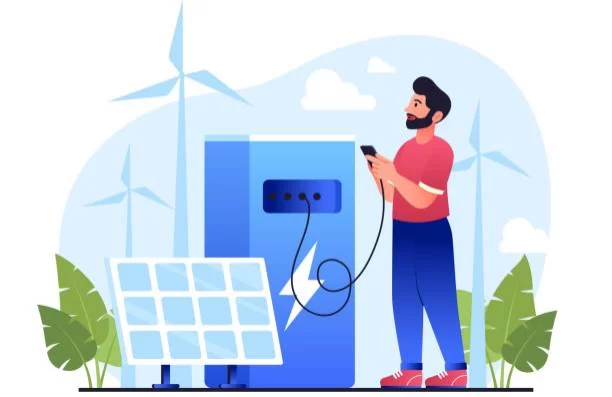Innovating Grid Solutions: Micro grid Energy's Role in the Energy Transition
In the evolving landscape of global energy systems, microgrids have emerged as a transformative solution, offering resilience, efficiency, and sustainability in the face of traditional grid challenges. This article delves into the concept of micro grid energy, its role in the broader energy transition, technological advancements, benefits, challenges, and future prospects.

Introduction
The traditional centralized electricity grid, characterized by large-scale power plants and extensive transmission networks, has long been the backbone of global energy distribution. However, this model faces challenges such as aging infrastructure, vulnerability to natural disasters, and increasing demands for renewable energy integration. In response, microgrids have gained traction as localized, decentralized energy systems capable of enhancing grid reliability, efficiency, and resilience.
Understanding Microgrid Energy
Definition and Components
: A microgrid is a localized group of electricity sources and loads that operates autonomously or is connected to the traditional grid. It typically includes distributed energy resources (DERs) such as solar photovoltaics (PV), wind turbines, battery storage systems, and sometimes combined heat and power (CHP) units. Microgrids can operate independently or in parallel with the main grid, depending on the design and operational needs.Operational Modes
: Microgrids offer several operational modes that enhance energy flexibility and resilience. They can function in grid-connected mode, where they interact with the main grid and exchange electricity based on demand and supply conditions. Alternatively, microgrids can operate in islanded mode during grid outages, ensuring continuous power supply to critical loads within their boundaries.Role of Microgrid Energy in the Energy Transition
Enhancing Grid Resilience:
-
Facilitating Renewable Energy Integration:
Improving Energy Efficiency:
Supporting Energy Access and Equity:
Technological Advancements in Micro grid Energy
Advanced Control Systems:
The evolution of advanced control systems and automation technologies has significantly enhanced the operational flexibility and efficiency of microgrids. Smart inverters, microgrid controllers, and sophisticated energy management systems enable real-time monitoring, optimization of energy flows, and seamless transition between grid-connected and islanded modes.
Energy Storage Innovations:
Energy storage technologies such as lithium-ion batteries, flow batteries, and hydrogen storage solutions play a critical role in the scalability and reliability of microgrids. These storage systems store surplus energy generated during periods of low demand and discharge it during peak demand, ensuring stable and continuous electricity supply.
Integration of Digitalization and IoT:
The integration of digitalization, Internet of Things (IoT), and predictive analytics is transforming microgrid operations. IoT-enabled sensors and meters provide valuable data on energy consumption patterns, grid performance, and equipment status. This data-driven approach allows operators to optimize energy management strategies, improve maintenance practices, and enhance overall system resilience.
Challenges Facing Micro grid Energy
Economic Viability and Cost Considerations:
Despite technological advancements, the initial investment and operational costs associated with deploying microgrids can be substantial. Factors such as equipment procurement, installation, maintenance, and grid interconnection expenses pose challenges to widespread adoption, particularly in economically disadvantaged regions.
Regulatory and Policy Frameworks:
The lack of standardized regulatory frameworks and policy support can hinder the deployment and expansion of microgrids. Issues related to permitting, grid interconnection standards, tariff structures, and energy market participation need to be addressed to create an enabling environment for microgrid development.
Technological Integration and Interoperability:
Integrating diverse DERs and ensuring interoperability among different technologies within a microgrid ecosystem can be complex. Compatibility issues, cybersecurity concerns, and the need for standardized communication protocols pose technical challenges that require robust solutions and industry collaboration.
Future Prospects of Micro grid Energy
Expansion in Urban and Rural Settings:
The future of microgrid energy looks promising with anticipated expansions in urban centers, remote communities, and industrial complexes. Advances in modular microgrid designs, scalable storage solutions, and renewable energy technologies will facilitate broader adoption and integration into existing infrastructure.
Grid Resilience and Climate Adaptation:
As climate change impacts intensify, microgrids are expected to play a critical role in enhancing grid resilience and supporting climate adaptation strategies. By diversifying energy sources and reducing reliance on centralized grids, microgrids contribute to building climate-resilient communities and infrastructure.
Policy and Market Reforms:
Continued advocacy for supportive policy frameworks and market reforms will be essential to unlock the full potential of micro grid energy. Policies that incentivize renewable energy deployment, streamline permitting processes, and facilitate grid integration will foster a conducive environment for investment and innovation in microgrid technologies.
Conclusion
Micro grid energy represents a paradigm shift in the way electricity is generated, distributed, and consumed. By offering decentralized, resilient, and sustainable energy solutions, microgrids contribute to achieving energy security, environmental sustainability, and community empowerment. As technology continues to evolve and regulatory frameworks mature, microgrid energy is poised to play an increasingly pivotal role in the global energy transition towards a cleaner and more resilient future.
